


Framed or unframed, desk size to sofa size, printed by us in Arizona and Alabama since 2007. Explore now.
Shorpy is funded by you. Patreon contributors get an ad-free experience.
Learn more.

- Baldwin 62303
- Baldwin VO-1000
- Cold
- No expense spared
- Tough Guys
- Lost in Toyland
- And without gloves
- If I were a blindfolded time traveler
- Smoke Consumer Also Cooks
- Oh that stove!
- Possibly still there?
- What?!?
- $100 Reward
- Freeze Frame
- Texas Flyer wanted
- Just a Year Too Soon
- WWII -- Replacing men with women at the railroad crossing.
- Yes, Icing
- You kids drive me nuts!
- NOT An Easy Job
- I wonder
- Just add window boxes
- Icing Platform?
- Indiana Harbor Belt abides
- Freezing haze
- Corrections (for those who care)
- C&NW at Nelson
- Fallen Flags
- A dangerous job made worse
- Water Stop
Print Emporium
Captain Kinescope: 1929
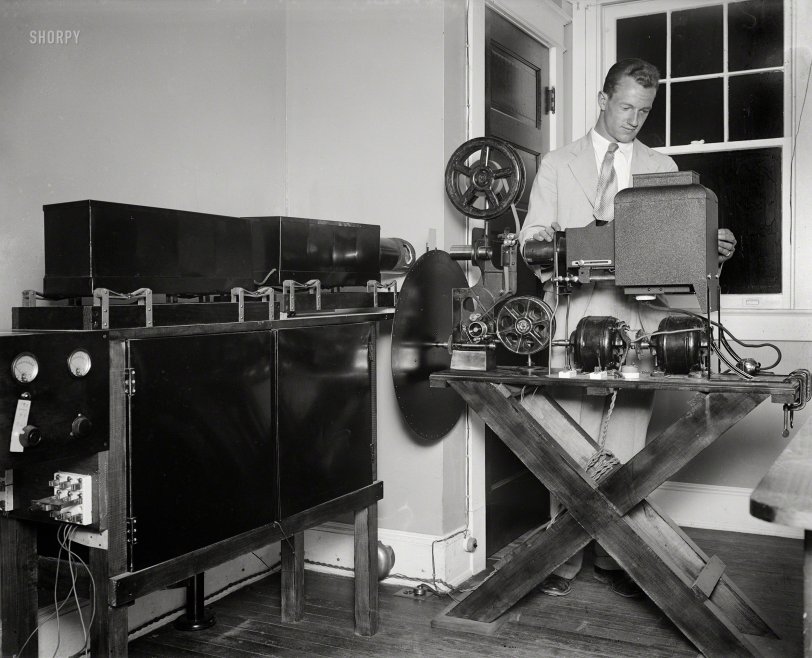
UPDATE: "Pioneer television inventor (Dr. C. Francis Jenkins, not pictured) opens new radio movie broadcasting station. Laboratory assistant Paul Thomsen examining machine made to broadcast motion pictures by radio." More photos here.
Washington, D.C. July or August 1929. "NO CAPTION" is all it says on this Harris & Ewing glass negative with an audiovisual vibe. Who can help us fill in the blanks? View full size.
Telecine
I think this is more-or-less the opposite of what we could call a kinescope - it's a Telecine setup, enabling a movie to be broadcast on "radio". In this case, using a mechanically-scanned TV system. Such things existed (with electronically-scanned TV) well into the 21st century.
Phenomenal Photos!
These photographs are PHENOMENAL. More than once I whispered, "Wow," to myself as I scrolled through them.
Thank you for sharing them!
As someone who teaches TV and film, I am legally required to pedantically point out that this machine is the opposite of a kinescope. A kinescope is, essentially, a film camera that records TV images. Jenkins's device is a TV camera that transmits film images.
So, Captain Kinescope is actually ... um... Mister Mechanical (TV)? Sorry. The alliteration is just not there.
[The term "kinescope" was coined by the inventor Vladimir Zworykin in 1929 to refer to the cathode ray tube in a television receiver. It was only much later that the word was applied to film recordings of TV. - Dave]
(Very) Early Television
Starring Washington, D.C., inventor Charles Francis Jenkins (1867-1934), a pioneer in electro-mechanical video (whose memoir, "The Boyhood of an Inventor," can be downloaded here). Click to embiggen.

1922. "Washington, D.C., inventor C. Francis Jenkins."
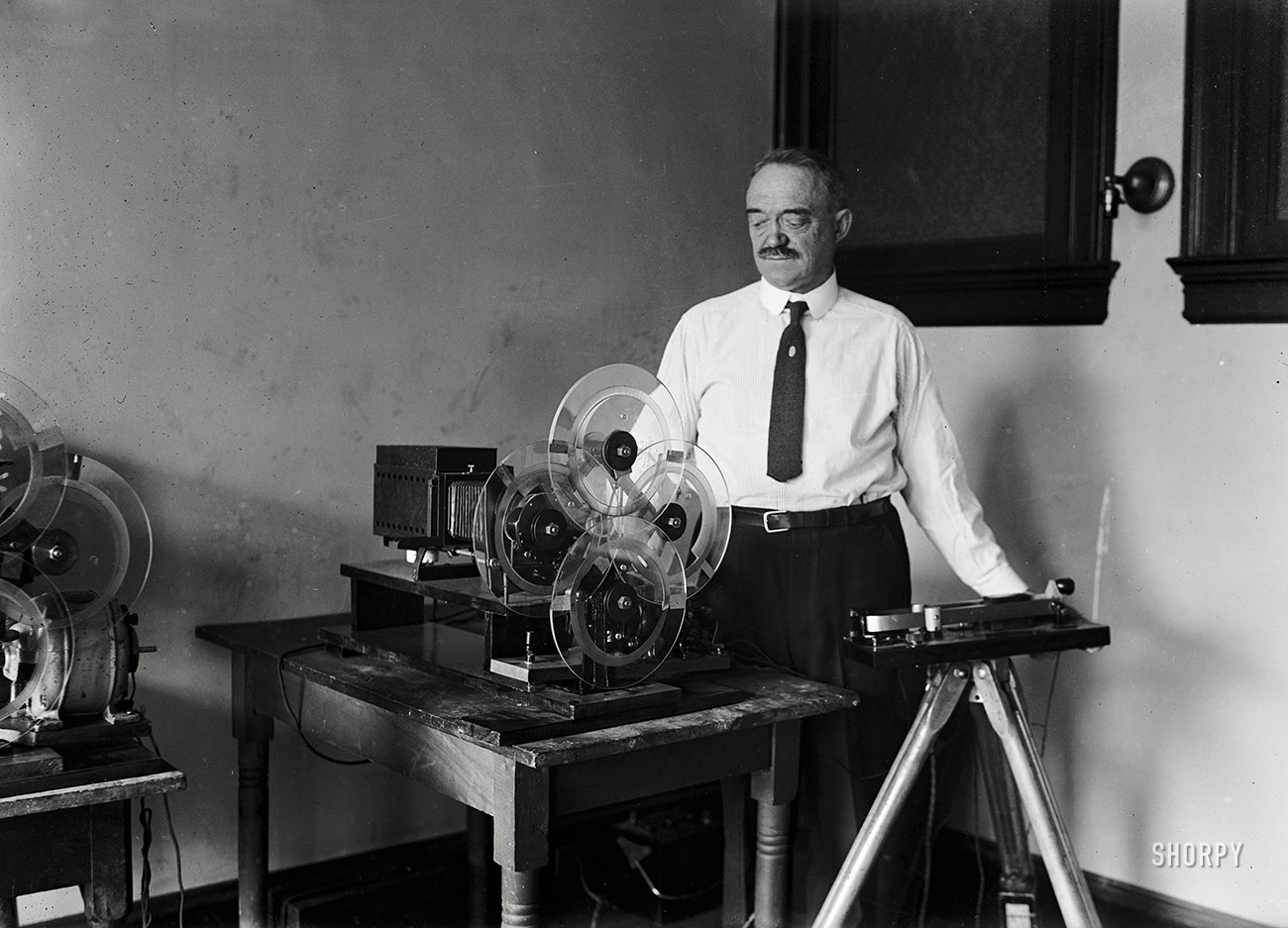
1923. "Inventor C. Francis Jenkins with most recent invention, radio camera with which it will be possible to send pictures by wireless. He hopes to be able to broadcast moving pictures of national events to distant cities immediately after they are photographed."
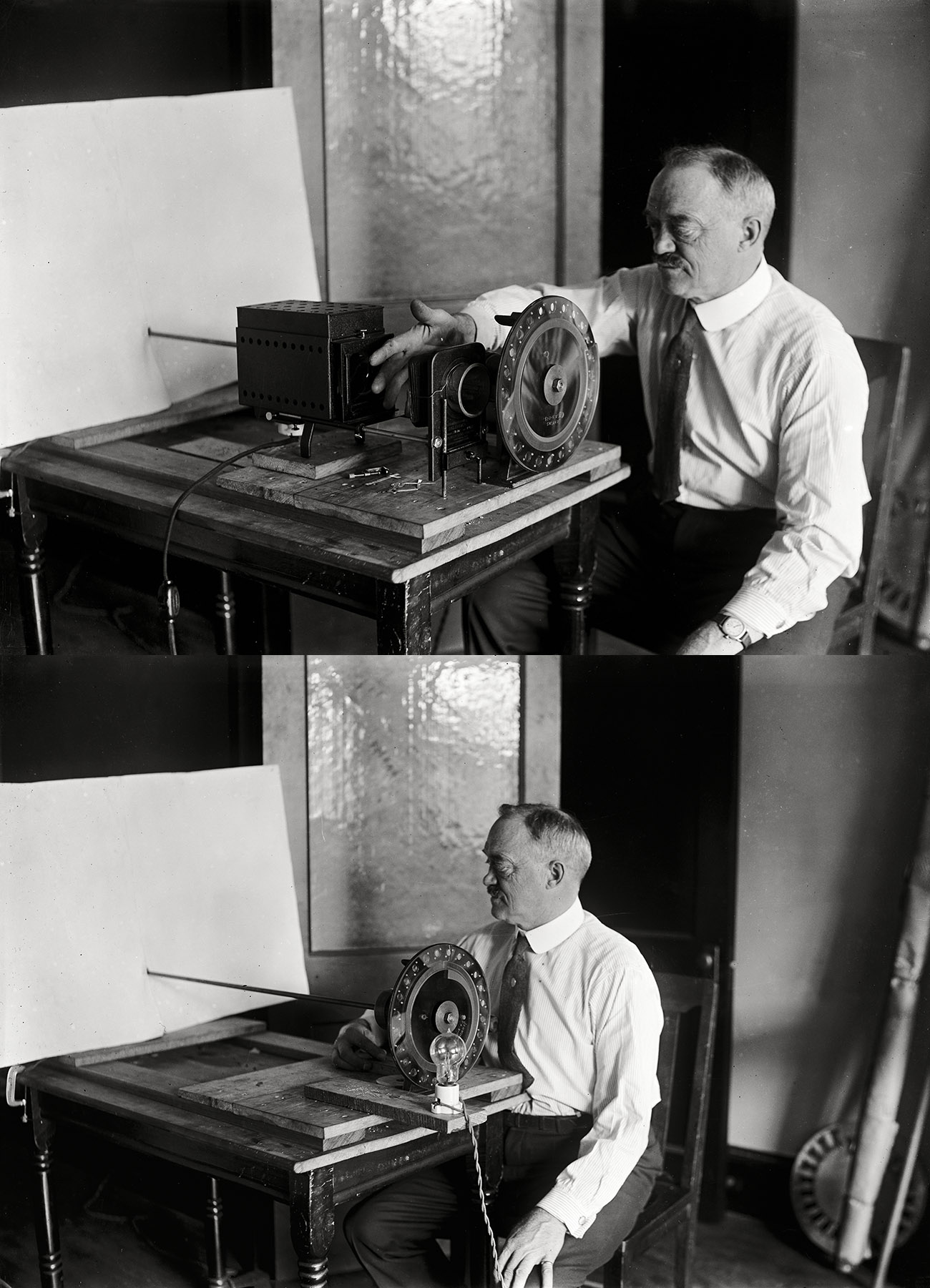
1923. "C. Francis Jenkins with apparatus machine for pictures by radio."
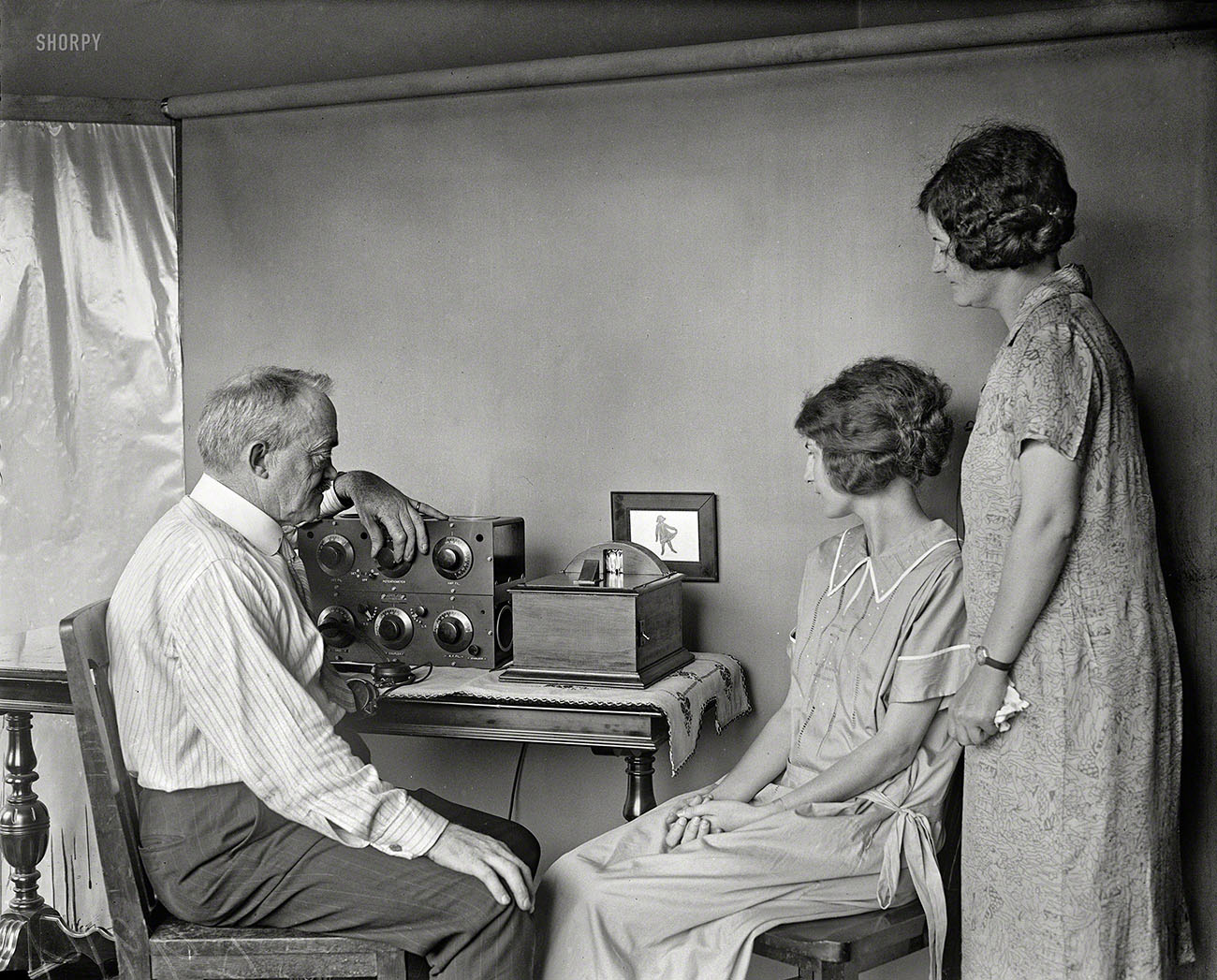
1925. "Motion pictures by radio are very near, predicts C. Francis Jenkins, who has designed this small radio-vision receiving set for use in the homes. It is only a few inches square and is attached to the regular radio receiving set. A miniature motion picture screen is placed on the wall of your home, as shown in this photo. The first of this machine to be made. The photo was taken in Mr. Jenkins' laboratory at Washington, D.C."
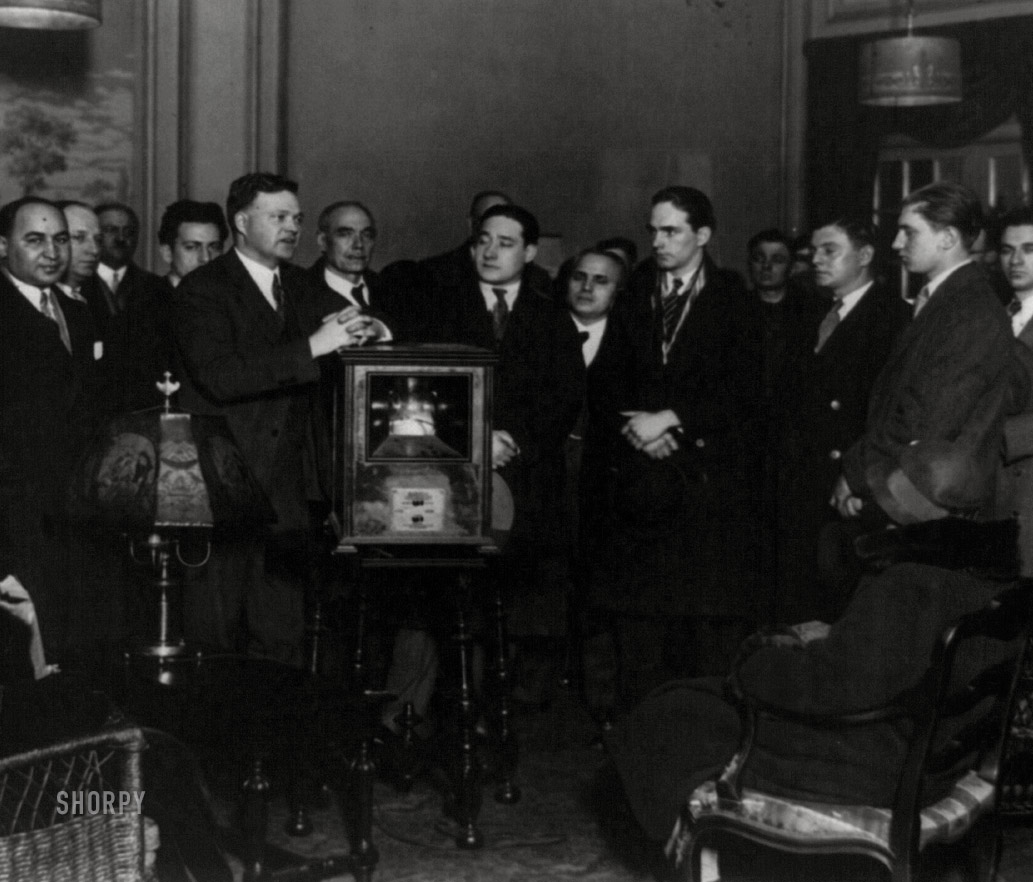
Circa 1927. "D.E. Replogle giving the first public demonstration of talking moving pictures being transmitted over radio without the use of land wires from the studio of the Jenkins Television Corp. at Jersey City, N.J."
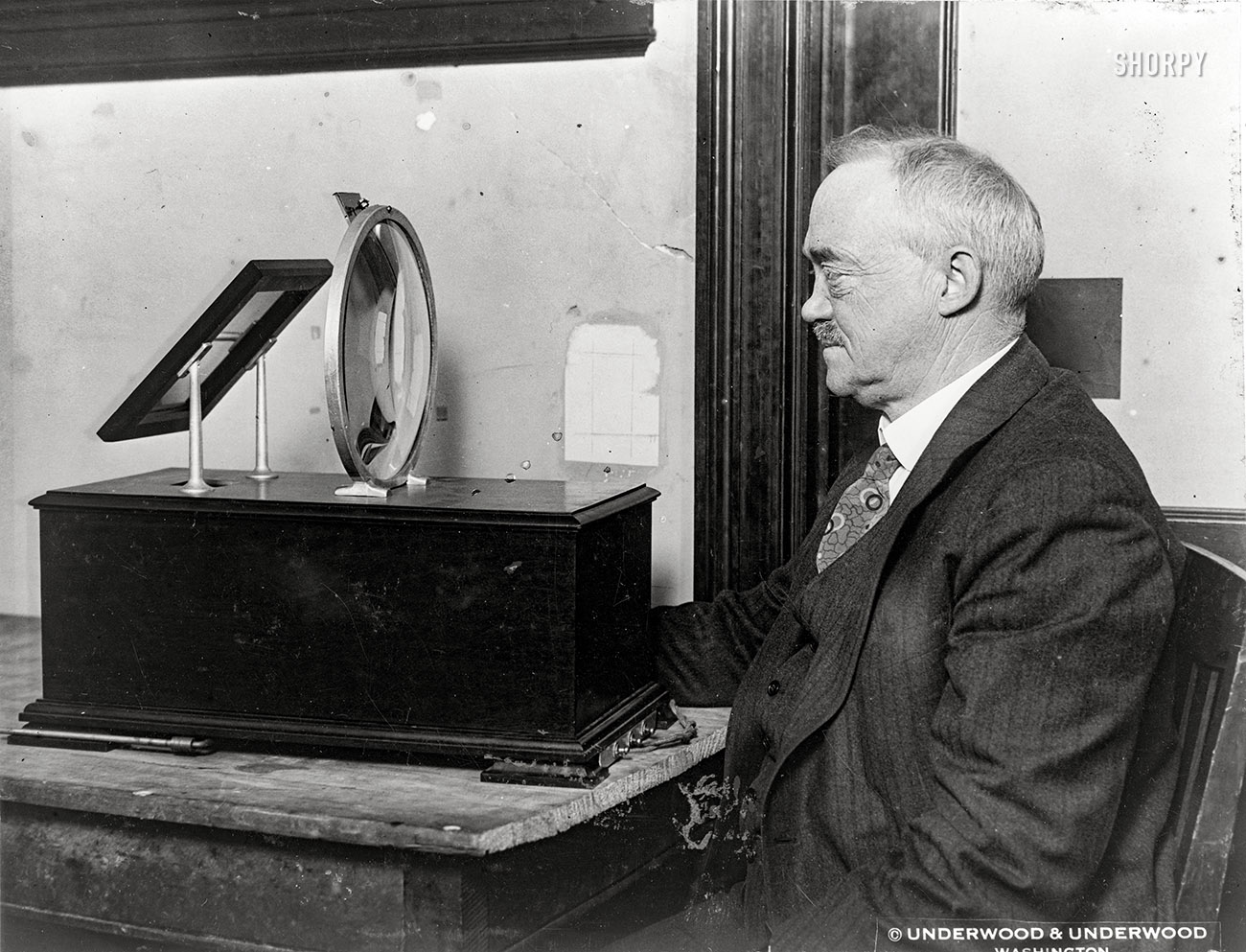
1928. Washington, D.C. "Inventor Charles Francis Jenkins inspecting the first new television receiver made for home use."
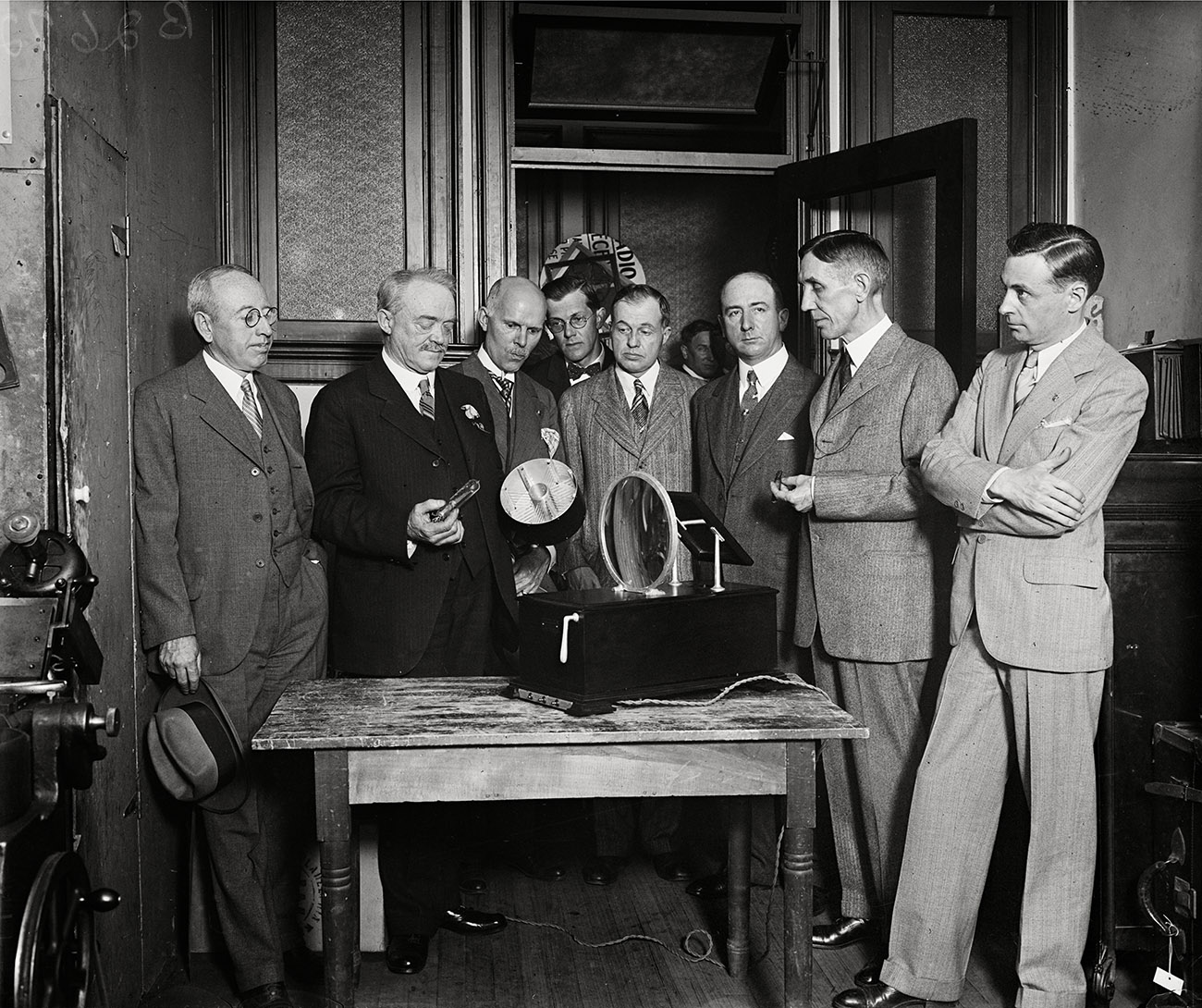
1928. Washington, D.C. "Charles Francis Jenkins (2nd from left) showing his Mirror Drum Television Receiver."
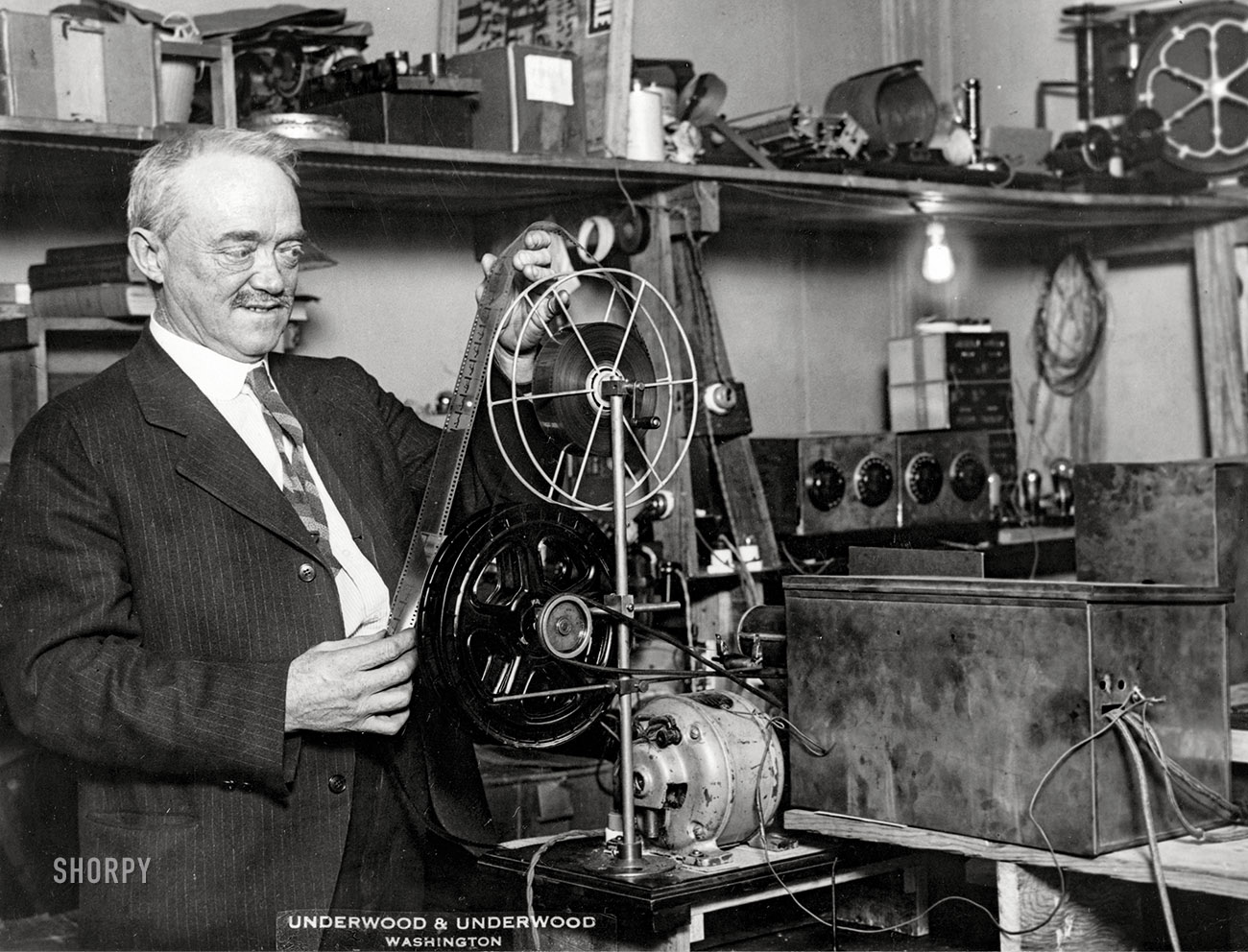
June 23, 1928. "C. Francis Jenkins, noted Washington inventor, inspecting the apparatus which he will use to broadcast motion pictures by radio beginning July 2, 1928."
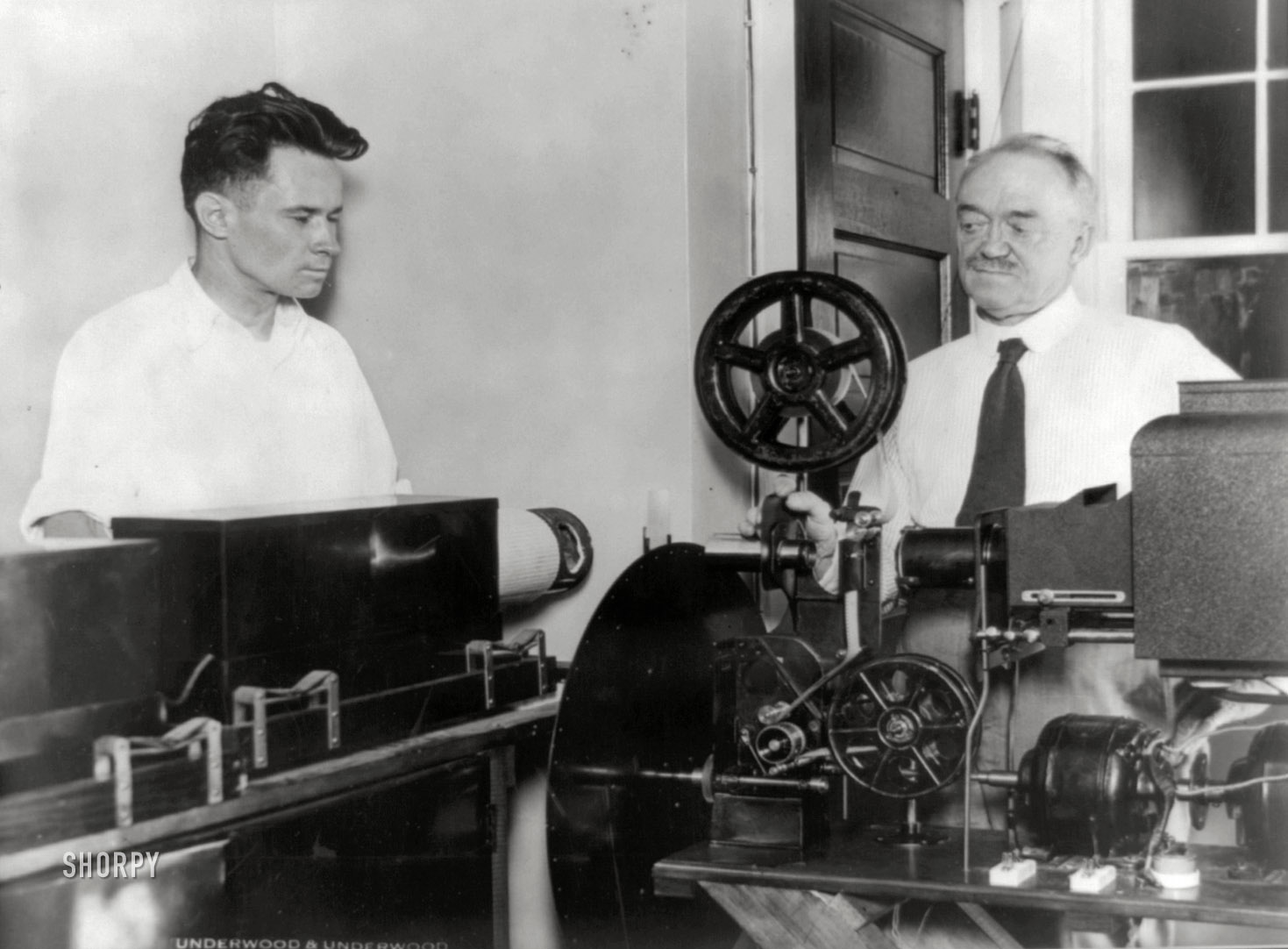
July 1929. Washington, D.C. "Dr. C. Francis Jenkins with Stuart Jenks, an associate engineer, examining a machine made to broadcast motion pictures by radio."

July 19, 1929. Washington, D.C. "Pioneer television inventor opens new radio movie broadcasting station. Dr. Charles Francis Jenkins with the main transmitting panel of the radio movie broadcasting station."
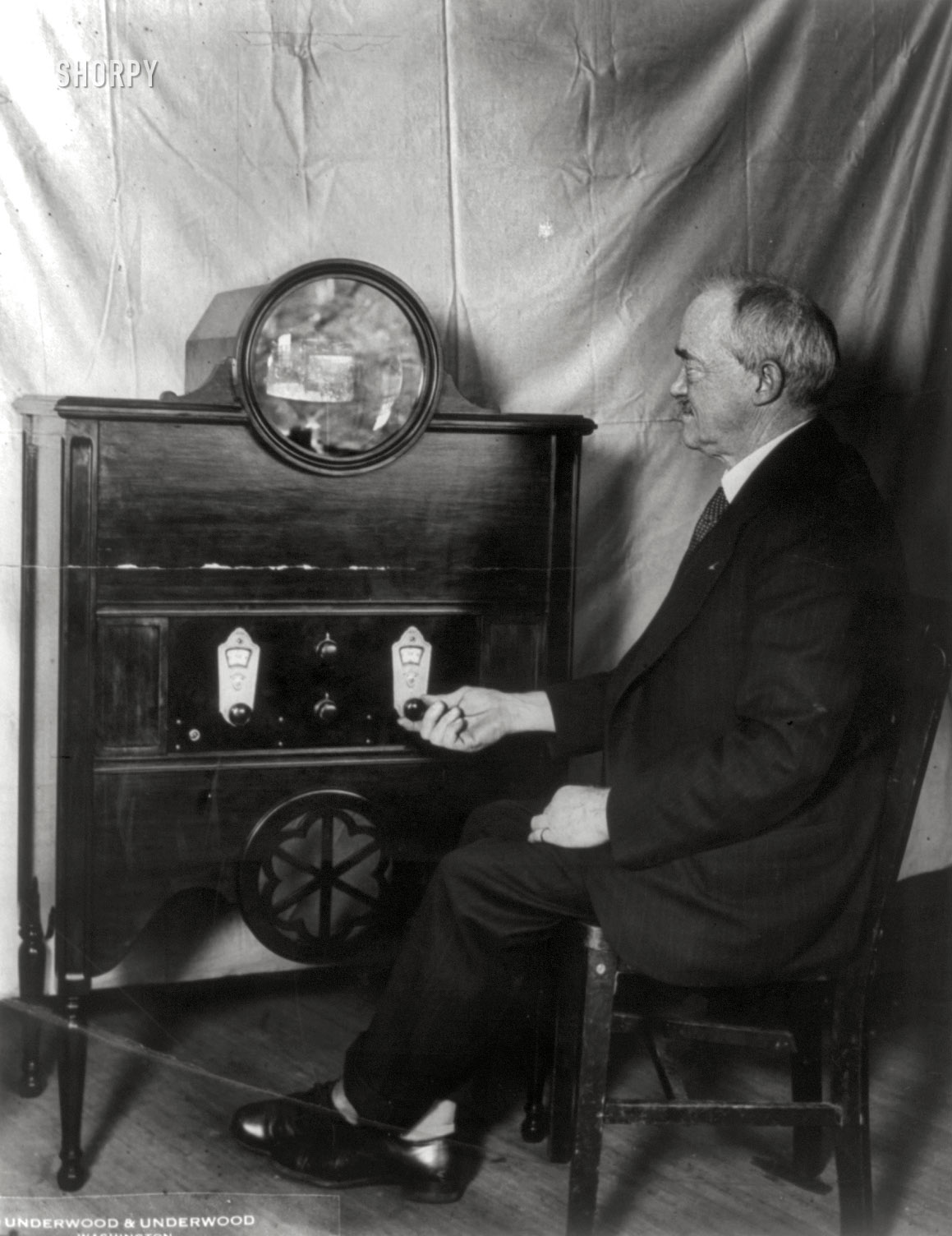
Oct. 15, 1929. Washington, D.C. "And now the radio movies go talkie. Dr. Charles Francis Jenkins with his latest achievement, a receiving instrument which will simultaneously respond to both words and images."
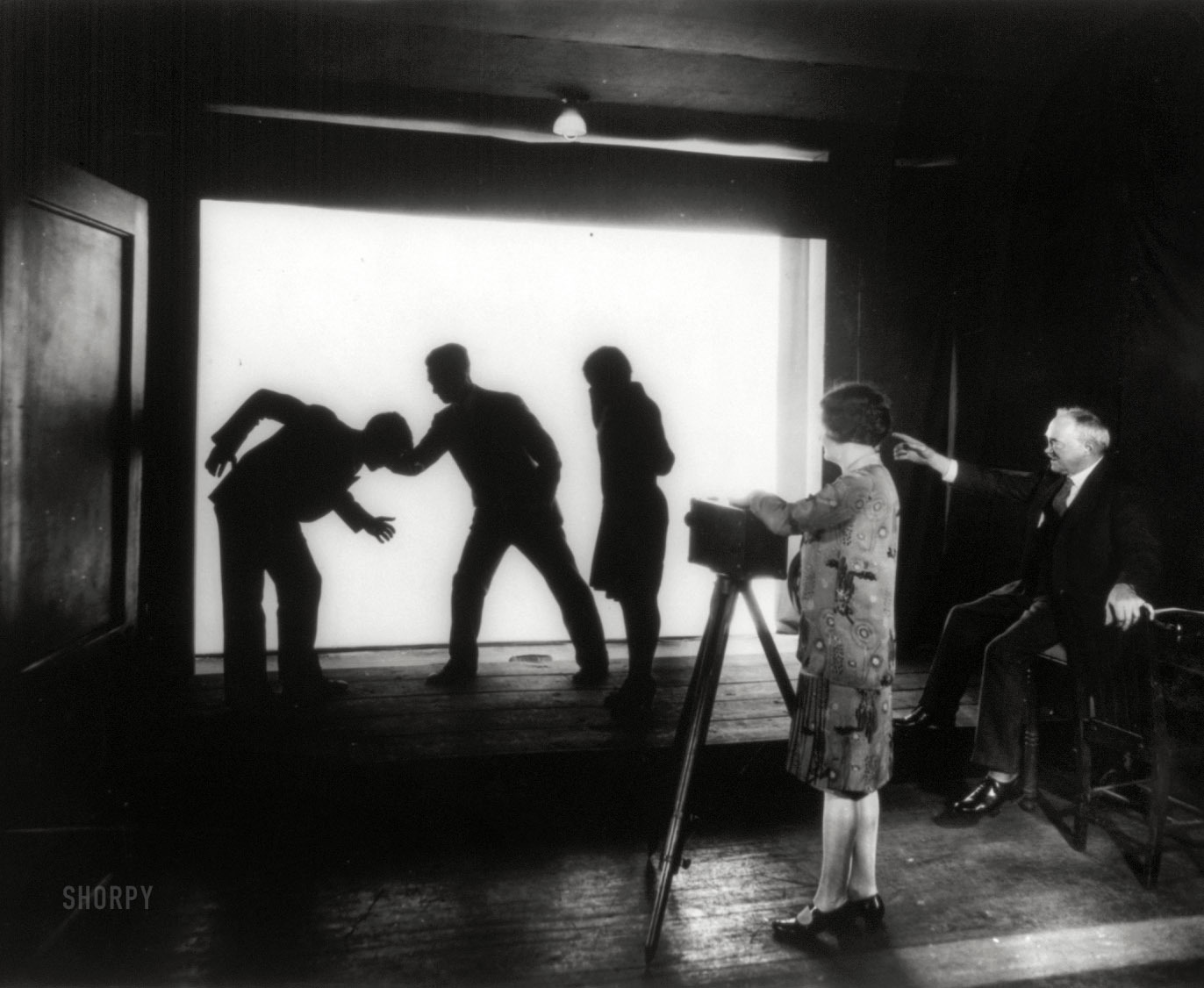
Nov. 6, 1929. "Dr. C. Francis Jenkins, noted inventor and television pioneer, directing a scene in his new studio in Washington, D.C., the first devoted exclusively to the production of motion pictures to be shown to an audience by radio; note that the performers are shown in silhouette, that being the form in which the pictures are received over the air, and that the cameraman is a girl."
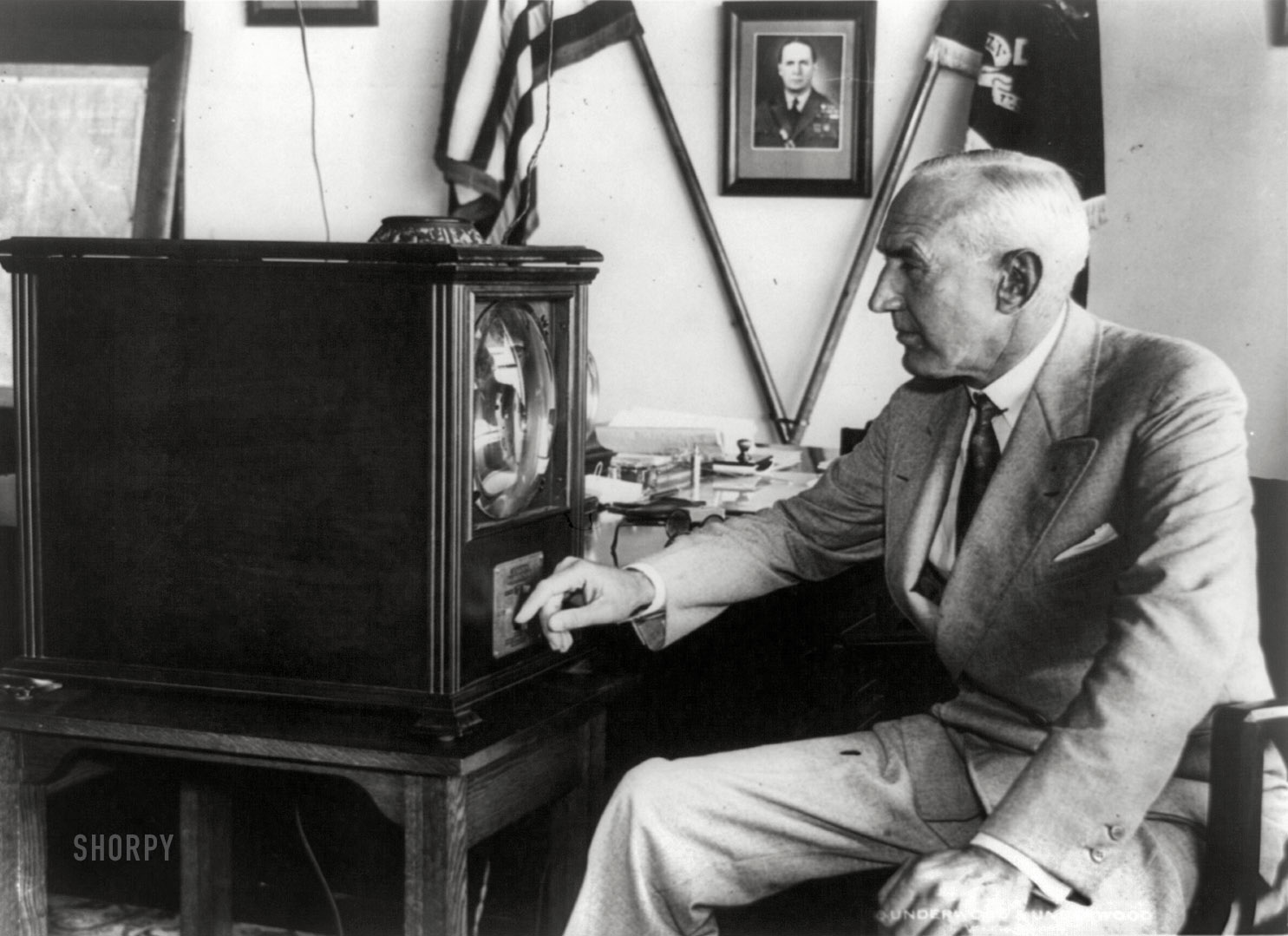
July 9, 1931. "The chief signal officer studies television. General Irving J. Carr, of the United States Army, examining a television receiver at his office in Washington."
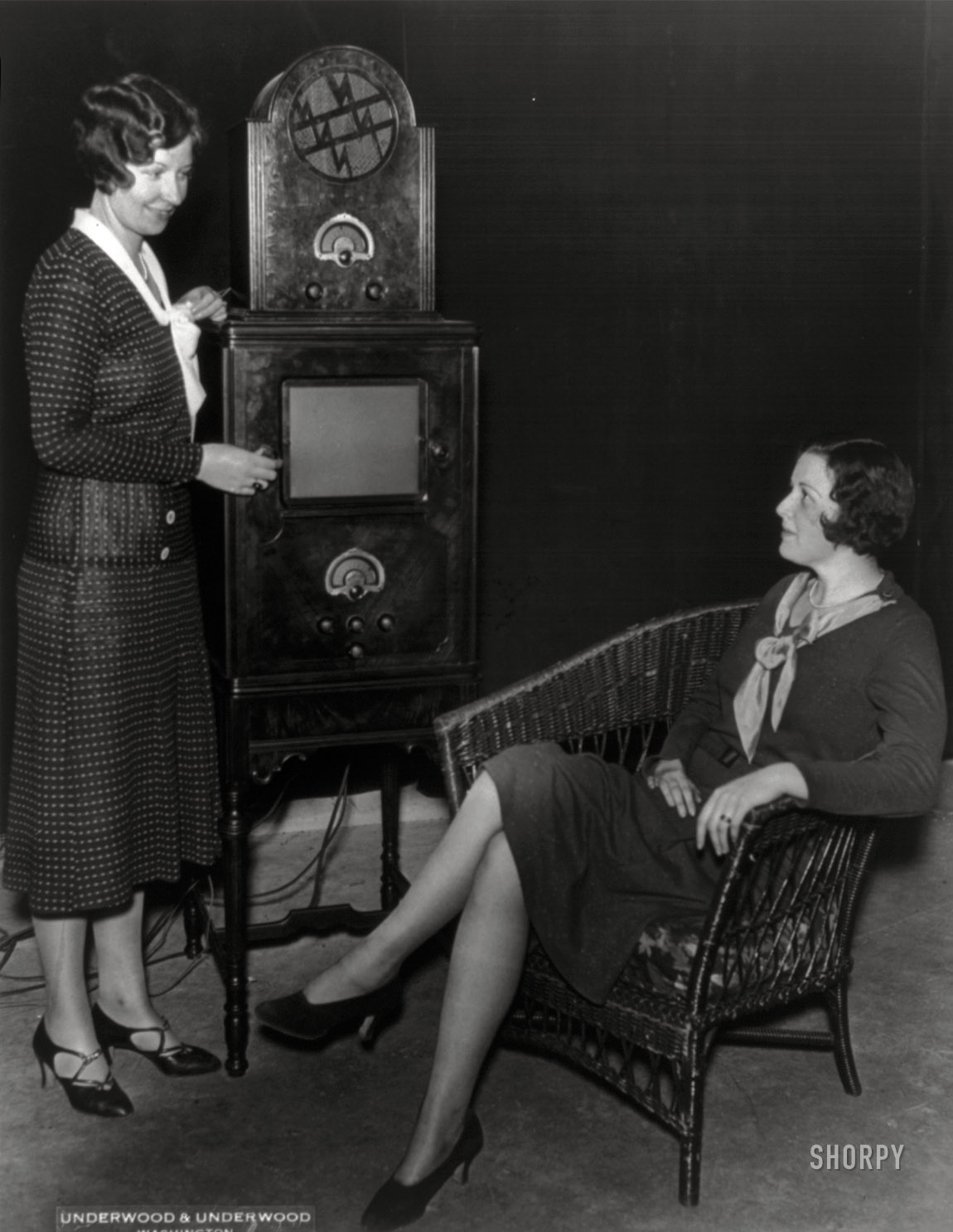
Oct. 26, 1931. "Misses Fay Christian and Kay Campion with a television, which was being shown at the Seventh Annual Industrial Exposition, Washington, D.C."
Related to C. Francis Jenkins?
Given the place and year, it may be a demonstration of the mechanical television system built by C. Francis Jenkins. Jenkins's lab was in Washington. His television broadcasting station, considered by many to be the first in the U.S., was in Wheaton, MD. The man in the photo is not Jenkins.
TV film scanner
It appears to be an experimental television film scanning device making use of a Nipkow disk.
























On Shorpy:
Today’s Top 5